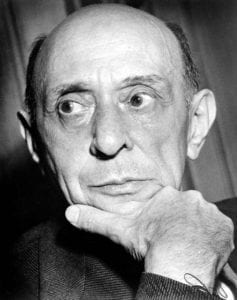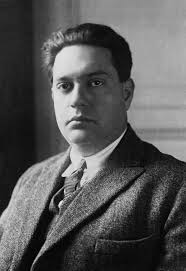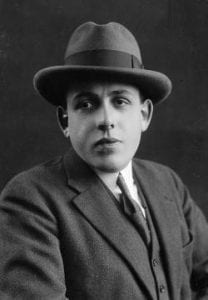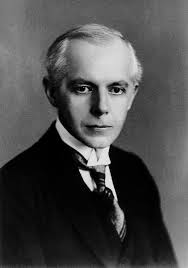Even with all of the internet resources available to us at St. Olaf, researching someone with a very small virtual presence is challenging.
I began with New Grove but other than a very brief paragraph about her it was unhelpful. It did not even provide sources. Literally, no works cited was attached.
So I moved on to Musical indexes, and between the three listed on our Music 345 research guide online I managed to find out when she first debuted, and when she died. Her existence was confirmed, but that’s about it.
After several hours of searching the various databases provided by the school I realized that there were no easily accessible texts on the woman herself… This resulted in my break-through.
Although there is no singular source that was most helpful, by researching significantly more famous people that Marya Freund was seen with, I can slowly assemble a picture of the woman herself. Among these people are
 Arnold Schoenberg,
Arnold Schoenberg,  Darius Milhaud,
Darius Milhaud,
 Frances Poulenc, and
Frances Poulenc, and  Béla Bartók.
Béla Bartók.
Among the sources on these composers which provide information on Marya Freund, here are two of my favorites:
“Die Beziehungen zwischen Bartok und Milhaud” 1 which is a German text that provides information on the singer’s relationship with both Bartok and Milhaud. Although there is not a lot of information available on the author, the back of this book includes original letters between Milhaud and Bartok which mention the singer. Although finding connections like this is a bit like fishing for a needle in a haystack, every mention of her is valuable. This one stood out because the author included the letters rather than simply citing them (because it is often impossible to track them down).
The book participates in a discourse surrounding the overlap between the two composers and on a smaller scale it argues that one thing they had in common was an appreciation for the singer Marya Freund.
Although she may not be famous in her own right, she was close with many influential composers in Paris.
My top sources are those about Arnold Schoenberg. Marya Freund was known for her interpretation of Schoenberg’s Pierrot Lunaire, so after sifting through many different books on Schoenberg I found a primary source written by Darius Milhaud “To Arnold Schoenberg on His Seventieth Birthday.”2
The main purpose of this and many other contributions from other authors was to honor Schoenberg for all of his accomplishments. Milhaud ends his entry by saying that “now, at the age of seventy, he [Schoenberg] can well be proud of his life and of his contribution to musical culture” (Milhaud 384). Although this text does not directly say that Marya was an influential character, it depicts her relationship with these composers and their music. Of course in a text like this it important to remember that it is not a critical work. It is not designed to objectively analyze a performance, but rather to glorify the life and works of a great composer.
By assembling bits and pieces of various biographies, letters, and diary entries from/by/about these famous composers a picture of who Marya Freund was, at least to the musical community of Paris, is beginning to form.
1
Breuer, Janos. Die Beziehungen zwischen Bartok und Milhaud. Budapest: Bericht über das Internationale Bartok Symposium, 1981. http://www.jstor.org/stable/901899?Search=yes&resultItemClick=true&searchText=Freund&searchUri=%2Faction%2FdoBasicSearch%3FQuery%3DFreund%26amp%3Bfilter%3Diid%253A10.2307%252Fi237263&seq=9#page_scan_t.
2
Milhaud, Darius. “To Arnold Schoenberg on His Seventieth Birthday: Personal Recollections.” The Musical Quarterly 30, no. 4 (October 1944): 379-84. http://www.jstor.org/stable/pdf/739401.pdf?acceptTC=true.
You must be logged in to post a comment.